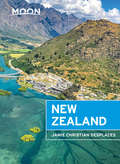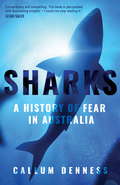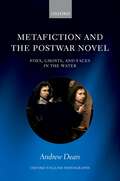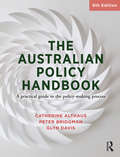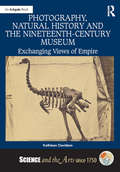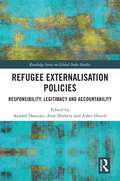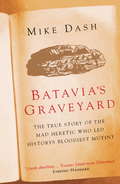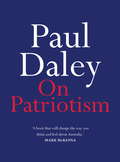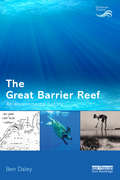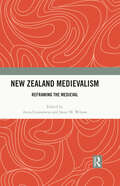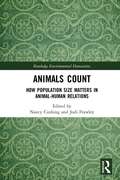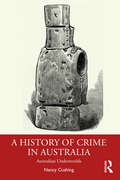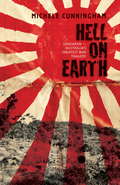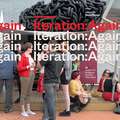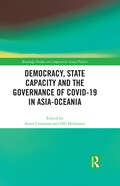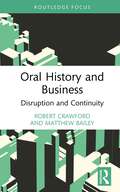- Table View
- List View
Moon New Zealand (Travel Guide)
by Jamie Christian DesplacesFrom green forests to blackened basalt and snowy mountains to golden beaches, adventure awaits around every bend on these dramatic islands. Experience Middle Earth with Moon New Zealand. Inside you'll find:Strategic itineraries including a week on both the North and South Islands, designed for hikers, cyclists, adrenaline junkies, history and culture buffs, and Lord of the Rings fansThe top spots for outdoor adventures, like surfing, mountain biking, and trekking the Great Walks, as well as tips on how to do a New Zealand road trip. Go bungy jumping, paragliding, or jet skiing in Queensland, soak in refreshing thermal pools, or embark on a multi-day trek to rugged coasts, glacial valleys, volcanoes, and fjordsCan't-miss sights and unique experiences: Cruise the hypnotic black waters of the Milford Sound, spot wild dolphins, kiwis, and blue penguins, and explore the sprawling Waitomo Caves lit by twinkling glowworms. Sample local sauvignon blancs in Marlborough and craft beers in Wellington, or sip cider in the Shire. Learn about Polynesian culture and history, marvel at Maori carvings, and savor a traditional hangiHow to experience New Zealand like an insider, support local and sustainable businesses, avoid crowds, and respectfully engage with the indigenous culture, with expert insightfrom Aukland local Jamie Christian DesplacesFull-color photos and detailed maps throughout, plus a full-color detachable mapReliable background information on the landscape, climate, wildlife, and history, as well as common customs and etiquetteHelpful resources on COVID-19 and traveling to New ZealandTravel tips: When to go, how to get around, and where to stay, plus advice for seniors, families with children, visitors with disabilities, and LGBTQ+ travelersWith Moon's expert advice and local insight, you can experience the best of New Zealand. About Moon Travel Guides: Moon was founded in 1973 to empower independent, active, and conscious travel. We prioritize local businesses, outdoor recreation, and traveling strategically and sustainably. Moon Travel Guides are written by local, expert authors with great stories to tell—and they can't wait to share their favorite places with you.For more inspiration, follow @moonguides on social media.
Sharks: A History Of Fear In Australia
by Callum DennessFor as long as people have lived in Australia, the shark has loomed large in our fears. From the Noongar people of Western Australia who stayed out of the water for fear of being taken, to media hysteria about attacks and even sightings today, sharks occupy the dark recesses of our national psyche unlike any other predator. They challenge the very sense of ourselves as Australians, a people who hug the coastline and love the freedom of the surf. And the dispute between whether to kill or protect sharks cuts to the political core of our nation, yet another divide between the right and the left. There is no denying that shark attacks have been increasing in recent years, and so have our fears. Where do we go from here? How worried should we be? Journalist Callum Denness deep-dives into the history of our relationship with sharks, and circles our fear by talking to activists, marine biologists, politicians, surfers, survivors and those who’ve lost loved ones. Compelling and challenging, this is the clearest picture yet of whether or not we can co-exist with sharks. Don’t get back into the water until you read Sharks: A History of Fear in Australia.
Metafiction and the Postwar Novel: Foes, Ghosts, and Faces in the Water (Oxford English Monographs)
by Andrew DeanMetafiction and the Postwar Novel is a full-length reassessment of one of the definitive literary forms of the postwar period, sometimes known as 'postmodern metafiction'. In the place of large-scale theorizing, this book centres on the intimacies of writing situations - metafiction as it responds to readers, literary reception, and earlier works in a career. The emergence of archival materials and posthumously published works helps to bring into view the stakes of different moments of writing. It develops new terms for discussing literary self-reflexivity, derived from a reading of Don Quixote and its reception by J.L. Borges - the 'self of writing' and the 'public author as signature'. Across three comprehensive chapters, Metafiction and Postwar Fiction shows how some of the most highly-regarded postwar writers were motivated to incorporate reflexive elements into their writing - and to what ends. The first chapter, on South African novelist J. M. Coetzee, shows with a new clarity how his fictions drew from and relativized academic literary theory and the conditions of writing in apartheid South Africa. The second chapter, on New Zealand writer Janet Frame, draws widely from her fictions, autobiographies, and posthumously published materials. It demonstrates the terms in which her writing addresses a readership seemingly convinced that her work expressed the interior experience of 'madness'. The final chapter, on American writer Philip Roth, shows how his early reception led to his later, and often explosive, reconsiderations of identity and literary value in postwar America.
Metafiction and the Postwar Novel: Foes, Ghosts, and Faces in the Water (Oxford English Monographs)
by Andrew DeanMetafiction and the Postwar Novel is a full-length reassessment of one of the definitive literary forms of the postwar period, sometimes known as 'postmodern metafiction'. In the place of large-scale theorizing, this book centres on the intimacies of writing situations - metafiction as it responds to readers, literary reception, and earlier works in a career. The emergence of archival materials and posthumously published works helps to bring into view the stakes of different moments of writing. It develops new terms for discussing literary self-reflexivity, derived from a reading of Don Quixote and its reception by J.L. Borges - the 'self of writing' and the 'public author as signature'. Across three comprehensive chapters, Metafiction and Postwar Fiction shows how some of the most highly-regarded postwar writers were motivated to incorporate reflexive elements into their writing - and to what ends. The first chapter, on South African novelist J. M. Coetzee, shows with a new clarity how his fictions drew from and relativized academic literary theory and the conditions of writing in apartheid South Africa. The second chapter, on New Zealand writer Janet Frame, draws widely from her fictions, autobiographies, and posthumously published materials. It demonstrates the terms in which her writing addresses a readership seemingly convinced that her work expressed the interior experience of 'madness'. The final chapter, on American writer Philip Roth, shows how his early reception led to his later, and often explosive, reconsiderations of identity and literary value in postwar America.
The Australian Policy Handbook: A practical guide to the policy making process
by Glyn Davis Catherine Althaus Peter BridgmanPublic policy permeates every aspect of our lives. It is the stuff of government, justifying taxes, driving legislation, and shaping our social services. Public policy gives us roads, railways and airports, emergency services, industry development, and natural resource management. While politicians make the decisions, public servants provide analysis and support for those choices.Drawing on their extensive practical experience, the authors outline the processes used in making public policy. They systematically explain the relationships between political decision-makers, public service advisers, other community participants, and those charged with implementing the programs that result.The sixth edition of this widely used introduction is fully updated, and includes new material on the professionalisation of politicians, the role of opposition members, loss of corporate memory in the public service, addressing systemic policy failure, nudge economics and the impact of social media and the sharing economy on policy making and government.'An invaluable guide for practitioners, academics and students to the craft of policy analysis, development and evaluation. It is an important resource for those with a commitment to sound evidence-based public policy.'Ken Smith, ANZSOG CEO and Dean 'An enduring and important contribution to the field. Althaus, Bridgman and Davis' pioneering policy cycle approach continues to offer vital insights into the policy-making process in Australia and internationally.'Lisa Paul AO PSM, Former Secretary of the Department of Education
The Australian Policy Handbook: A practical guide to the policy making process
by Glyn Davis Catherine Althaus Peter BridgmanPublic policy permeates every aspect of our lives. It is the stuff of government, justifying taxes, driving legislation, and shaping our social services. Public policy gives us roads, railways and airports, emergency services, industry development, and natural resource management. While politicians make the decisions, public servants provide analysis and support for those choices.Drawing on their extensive practical experience, the authors outline the processes used in making public policy. They systematically explain the relationships between political decision-makers, public service advisers, other community participants, and those charged with implementing the programs that result.The sixth edition of this widely used introduction is fully updated, and includes new material on the professionalisation of politicians, the role of opposition members, loss of corporate memory in the public service, addressing systemic policy failure, nudge economics and the impact of social media and the sharing economy on policy making and government.'An invaluable guide for practitioners, academics and students to the craft of policy analysis, development and evaluation. It is an important resource for those with a commitment to sound evidence-based public policy.'Ken Smith, ANZSOG CEO and Dean 'An enduring and important contribution to the field. Althaus, Bridgman and Davis' pioneering policy cycle approach continues to offer vital insights into the policy-making process in Australia and internationally.'Lisa Paul AO PSM, Former Secretary of the Department of Education
Australian Settler Colonialism and the Cummeragunja Aboriginal Station: Redrawing Boundaries (First Nations and the Colonial Encounter)
by Fiona DavisIn 1938, the anthropologist Norman Tindale gave a classroom of young Aboriginal children a set of crayons and asked them to draw. The children, residents of the government-run Aboriginal station Cummeragunja, mostly drew pictures of aspects of white civilization boats, houses and flowers. What now to make of their artwork? Were the children encouraged or pressured to draw non-Aboriginal scenes, or did they draw freely, appropriating the white culture they now lived within? Did their Aboriginality change the meaning of their art, as they sketched out this ubiquitous colonial imagery? Australian Settler Colonialism and the Cummeragunja Aboriginal Station traces Cummeragunja's history from its establishment in the 1880s to its mass walk-off in 1939 and finally, to the 1960s, when its residents regained greater control over the land. Taking in oral history traditions, the author reveals the competing interests of settler governments, scientific and religious organizations, and nearby settler communities. The nature of these interests has broad and important implications for understanding settler colonial history. This history shows white people set boundaries on Aboriginal behaviour and movement, through direct legislation and the provision of opportunities and acceptance. But Aboriginal people had agency within and, at times, beyond these limits. Aboriginal people appropriated aspects of white culture including the houses, the flowers and the boats that their children drew for Tindale - reshaping them into new tools for Aboriginal society, tools with which to build lives and futures in a changed environment.
Photography, Natural History and the Nineteenth-Century Museum: Exchanging Views of Empire (Science and the Arts since 1750)
by Kathleen DavidsonThe Victorian era heralded an age of transformation in which momentous changes in the field of natural history coincided with the rise of new visual technologies. Concurrently, different parts of the British Empire began to more actively claim their right to being acknowledged as indispensable contributors to knowledge and the progress of empire. This book addresses the complex relationship between natural history and photography from the 1850s to the 1880s in Britain and its colonies: Australia, New Zealand and, to a lesser extent, India. Coinciding with the rise of the modern museum, photography’s arrival was timely, and it rapidly became an essential technology for recording and publicising rare objects and valuable collections. Also during this period, the medium assumed a more significant role in the professional practices and reputations of naturalists than has been previously recognized, and it figured increasingly within the expanding specialized networks that were central to the production and dissemination of new knowledge. In an interrogation that ranges from the first forays into museum photography and early attempts to document collecting expeditions to the importance of traditional and photographic portraiture for the recognition of scientific discoveries, this book not only recasts the parameters of what we actually identify as natural history photography in the Victorian era but also how we understand the very structure of empire in relation to this genre at that time.
Photography, Natural History and the Nineteenth-Century Museum: Exchanging Views of Empire (Science and the Arts since 1750)
by Kathleen DavidsonThe Victorian era heralded an age of transformation in which momentous changes in the field of natural history coincided with the rise of new visual technologies. Concurrently, different parts of the British Empire began to more actively claim their right to being acknowledged as indispensable contributors to knowledge and the progress of empire. This book addresses the complex relationship between natural history and photography from the 1850s to the 1880s in Britain and its colonies: Australia, New Zealand and, to a lesser extent, India. Coinciding with the rise of the modern museum, photography’s arrival was timely, and it rapidly became an essential technology for recording and publicising rare objects and valuable collections. Also during this period, the medium assumed a more significant role in the professional practices and reputations of naturalists than has been previously recognized, and it figured increasingly within the expanding specialized networks that were central to the production and dissemination of new knowledge. In an interrogation that ranges from the first forays into museum photography and early attempts to document collecting expeditions to the importance of traditional and photographic portraiture for the recognition of scientific discoveries, this book not only recasts the parameters of what we actually identify as natural history photography in the Victorian era but also how we understand the very structure of empire in relation to this genre at that time.
Refugee Externalisation Policies: Responsibility, Legitimacy and Accountability (Routledge Series on Global Order Studies)
by Azadeh Dastyari Amy Nethery Asher HirschThis book examines the impact and effects of refugee externalisation policies in two regions: Australia’s border control practices in Southeast Asia and the Pacific and the activities of the European Union and its member states in North Africa. The book assesses the underlying motivations, processes, policy frameworks, and human rights violations of refugee externalisation practices. Case studies illuminate the funding, institutional partnerships, geopolitical impacts, financial costs, and the human price of refugee externalisation. It provides the first truly comparative analysis of asylum externalisation and explores maritime interdiction, extraterritorial process, containment and third-country interception, and communication campaigns in Southeast Asia and the Middle East/North Africa. This book will be of key interest to scholars and students of refugee and asylum studies, law, politics, and the arts, legal practitioners, non-government organisations, and policymakers grappling with the issues of detention, refugee externalisation practices, and the growing need to find safety for the world’s most vulnerable.
Refugee Externalisation Policies: Responsibility, Legitimacy and Accountability (Routledge Series on Global Order Studies)
by Azadeh DastyariThis book examines the impact and effects of refugee externalisation policies in two regions: Australia’s border control practices in Southeast Asia and the Pacific and the activities of the European Union and its member states in North Africa. The book assesses the underlying motivations, processes, policy frameworks, and human rights violations of refugee externalisation practices. Case studies illuminate the funding, institutional partnerships, geopolitical impacts, financial costs, and the human price of refugee externalisation. It provides the first truly comparative analysis of asylum externalisation and explores maritime interdiction, extraterritorial process, containment and third-country interception, and communication campaigns in Southeast Asia and the Middle East/North Africa. This book will be of key interest to scholars and students of refugee and asylum studies, law, politics, and the arts, legal practitioners, non-government organisations, and policymakers grappling with the issues of detention, refugee externalisation practices, and the growing need to find safety for the world’s most vulnerable.
Batavia's Graveyard: The True Story Of The Mad Heretic Who Led History's Bloodiest Mutiny
by Mike DashThe true story of the mad heretic who led history's bloodiest mutiny - 'An adult version of LORD OF THE FLIES that is, moreover, entirely true' Evening StandardWhen the Dutch East Indiaman Batavia struck an uncharted reef off the new continent of Australia on her maiden voyage in 1629, 332 men, women and children were on board. While some headed off in a lifeboat to seek help, 250 of the survivors ended up on a tiny coral island less than half a mile long. A band of mutineers, whose motives were almost beyond comprehension, then started on a cold-blooded killing spree, leaving fewer than 80 people alive when the rescue boat arrived three months later. BATAVIA'S GRAVEYARD tells this strange story as a gripping narrative structured around three strong principal characters: Francisco Pelsaert, the cultivated but weak-willed captain; Jeronimus Cornelisz, a sinister apothecary with a terrifying personal philosophy influenced by Rosicrucianism who set himself up as the ruler of the island; and Wiebbe Hayes, the only survivor with the courage to fight Jeronimus's band. The background to these events, including the story of the Dutch East India Company, and the discovery of Australia, is richly drawn.
On Patriotism (On Series)
by Paul DaleyHow has militarisation come to define Australian valour? Why has the long shadow of World War I dominated our sense of patriotism?ON PATRIOTISM explores what it really means to love and serve your country. Paul Daley contemplates ways to escape the cultural binds that tie us to Anzac, British settlement and flag-waving.'Straight from the heart and deeply informed. With Indigenous culture at its centre, Paul Daley has given us a patriotism for the twenty-first century.' PROFESSOR MARK McKENNA
The Great Barrier Reef: An Environmental History (Earthscan Oceans)
by Ben DaleyThe Great Barrier Reef is located along the coast of Queensland in north-east Australia and is the world's largest coral reef ecosystem. Designated a World Heritage Area, it has been subject to increasing pressures from tourism, fishing, pollution and climate change, and is now protected as a marine park. This book provides an original account of the environmental history of the Great Barrier Reef, based on extensive archival and oral history research. It documents and explains the main human impacts on the Great Barrier Reef since European settlement in the region, focusing particularly on the century from 1860 to 1960 which has not previously been fully documented, yet which was a period of unprecedented exploitation of the ecosystem and its resources. The book describes the main changes in coral reefs, islands and marine wildlife that resulted from those impacts. In more recent decades, human impacts on the Great Barrier Reef have spread, accelerated and intensified, with implications for current management and conservation practices. There is now better scientific understanding of the threats faced by the ecosystem. Yet these modern challenges occur against a background of historical levels of exploitation that is little-known, and that has reduced the ecosystem's resilience. The author provides a compelling narrative of how one of the world's most iconic and vulnerable ecosystems has been exploited and degraded, but also how some early conservation practices emerged.
The Great Barrier Reef: An Environmental History (Earthscan Oceans)
by Ben DaleyThe Great Barrier Reef is located along the coast of Queensland in north-east Australia and is the world's largest coral reef ecosystem. Designated a World Heritage Area, it has been subject to increasing pressures from tourism, fishing, pollution and climate change, and is now protected as a marine park. This book provides an original account of the environmental history of the Great Barrier Reef, based on extensive archival and oral history research. It documents and explains the main human impacts on the Great Barrier Reef since European settlement in the region, focusing particularly on the century from 1860 to 1960 which has not previously been fully documented, yet which was a period of unprecedented exploitation of the ecosystem and its resources. The book describes the main changes in coral reefs, islands and marine wildlife that resulted from those impacts. In more recent decades, human impacts on the Great Barrier Reef have spread, accelerated and intensified, with implications for current management and conservation practices. There is now better scientific understanding of the threats faced by the ecosystem. Yet these modern challenges occur against a background of historical levels of exploitation that is little-known, and that has reduced the ecosystem's resilience. The author provides a compelling narrative of how one of the world's most iconic and vulnerable ecosystems has been exploited and degraded, but also how some early conservation practices emerged.
New Zealand Medievalism: Reframing the Medieval
by Anna Czarnowus Janet M. WilsonThis volume maps the phenomenon of medievalism in Aotearoa, initially as an import by the early white settler society, and as a form of nation building that would reinforce Britishness and ancestral belonging. This colonial narrative underpins the volume’s focus on the imperial relationship in chapters on the academic study of the Middle Ages, on medievalism in film and music, in manuscript and book collections, and colonial stained glass and architecture. Through the alternative 21st-century frameworks of a global Middle Ages and Aotearoa’s bicultural nationalism, the volume also introduces Maori understandings of the ancestral past that parallel the European epoch and, at the opposite end of the spectrum, the phenomenon of global right-wing medievalism, as evidenced in the Alt-right extremism underpinning the Christchurch mosque attack of 2019.The 11 chapters trace the transcultural moves and networks that comprise the shift from the 20th-century study of the Middle Ages as an historical period to manifestations of medievalism as the reception and interpretation of the medieval past in postmedieval times. Collectively these are viewed as indications of the changing public perception about the meaning and practice of the European heritage from the colonial to contemporary era.The volume will appeal to educationists, scholars, and students interested in the academic history of the Middle Ages in New Zealand; enthusiasts of film, music, and performance of the medieval; members of the public interested in Aotearoa’s history and popular culture; and all who enjoy the colourful reinventions of medievalism.
Animals Count: How Population Size Matters in Animal-Human Relations (Routledge Environmental Humanities)
by Nancy Cushing Jodi FrawleyWhether their populations are perceived as too large, just right, too small or non-existent, animal numbers matter to the humans with whom they share environments. Animals in the right numbers are accepted and even welcomed, but when they are seen to deviate from the human-declared set point, they become either enemies upon whom to declare war or victims to be protected. In this edited volume, leading and emerging scholars investigate for the first time the ways in which the size of an animal population impacts how they are viewed by humans and, conversely, how human perceptions of populations impact animals. This collection explores the fortunes of amphibians, mammals, insects and fish whose numbers have created concern in settler Australia and examines shifts in these populations between excess, abundance, equilibrium, scarcity and extinction. The book points to the importance of caution in future campaigns to manipulate animal populations, and demonstrates how approaches from the humanities can be deployed to bring fresh perspectives to understandings of how to live alongside other animals.
Animals Count: How Population Size Matters in Animal-Human Relations (Routledge Environmental Humanities)
by Nancy Cushing Jodi FrawleyWhether their populations are perceived as too large, just right, too small or non-existent, animal numbers matter to the humans with whom they share environments. Animals in the right numbers are accepted and even welcomed, but when they are seen to deviate from the human-declared set point, they become either enemies upon whom to declare war or victims to be protected. In this edited volume, leading and emerging scholars investigate for the first time the ways in which the size of an animal population impacts how they are viewed by humans and, conversely, how human perceptions of populations impact animals. This collection explores the fortunes of amphibians, mammals, insects and fish whose numbers have created concern in settler Australia and examines shifts in these populations between excess, abundance, equilibrium, scarcity and extinction. The book points to the importance of caution in future campaigns to manipulate animal populations, and demonstrates how approaches from the humanities can be deployed to bring fresh perspectives to understandings of how to live alongside other animals.
A History of Crime in Australia: Australian Underworlds
by Nancy CushingThis book provides a lively and accessible account of Australia’s most prominent crimes and criminals of the nineteenth and twentieth century and offers an informative background for those seeking to understand crimes committed today. A History of Crime in Australia examines the imposition of English law on this ancient continent, and how its operation affected both transported offenders from Great Britain and Ireland, and the Aboriginal and Torres Strait Islander peoples whose own systems of Law were overlaid. Drawing upon cutting-edge research in the field, original work by the author, and essays from leading crime history researchers, it addresses the question of whether there was an Australian underworld. In doing so, it provides background for well known offenders including bushranger Ned Kelly and the razor gangs of the 1920s and for sensational crimes like the Mount Rennie Outrage, the Pyjama Girl Mystery and the Shark Arm Murder and the miscarriage of justice following the disappearance of Azaria Chamberlain at Uluru in 1980. Through these case studies, the book draws out points of tension and cohesion within Australian society, exposing the enduring anxiety around those who were considered to be outsiders, and how the criminal justice system was used to manage these concerns. This book includes a guide to conducting research in the field of Australian crime history and sources for further study. Designed as an introductory text for students, this book will be of interest to those studying criminology and crime history, and anyone who would like to deepen their understanding of crime’s place in Australia’s social and cultural history.
A History of Crime in Australia: Australian Underworlds
by Nancy CushingThis book provides a lively and accessible account of Australia’s most prominent crimes and criminals of the nineteenth and twentieth century and offers an informative background for those seeking to understand crimes committed today. A History of Crime in Australia examines the imposition of English law on this ancient continent, and how its operation affected both transported offenders from Great Britain and Ireland, and the Aboriginal and Torres Strait Islander peoples whose own systems of Law were overlaid. Drawing upon cutting-edge research in the field, original work by the author, and essays from leading crime history researchers, it addresses the question of whether there was an Australian underworld. In doing so, it provides background for well known offenders including bushranger Ned Kelly and the razor gangs of the 1920s and for sensational crimes like the Mount Rennie Outrage, the Pyjama Girl Mystery and the Shark Arm Murder and the miscarriage of justice following the disappearance of Azaria Chamberlain at Uluru in 1980. Through these case studies, the book draws out points of tension and cohesion within Australian society, exposing the enduring anxiety around those who were considered to be outsiders, and how the criminal justice system was used to manage these concerns. This book includes a guide to conducting research in the field of Australian crime history and sources for further study. Designed as an introductory text for students, this book will be of interest to those studying criminology and crime history, and anyone who would like to deepen their understanding of crime’s place in Australia’s social and cultural history.
Hell on Earth: Sandakan - Australia's greatest war tragedy
by Michele CunninghamThe heart-rending story of the Australians brutally imprisoned in Sandakan, the Japanese POW camp in North Borneo, whose very name came to symbolise cruelty and ill-treatment.In mid-1942, after the fall of Singapore, almost three thousand Allied prisoners of war were taken by the Japanese from Changi to Sandakan. Of those, 2500 lost their lives.Men died at Sandakan and on the infamous death marches: they died from sickness and starvation, torture and appalling violence, or were killed by the guards as they were forced to keep moving along a seemingly never-ending track. Only six Australians survived the death marches, out of the thousand who left ...Michele Cunningham's father was one of those who survived Sandakan, and then Kuching. Through the mateship and common bond of the survivors, she has had access to their stories, and here she gives an account of these courageous men – those who refused to break no matter how badly they were treated; and those brave men who didn't make it. And it is the story of the depths to which the Japanese sank.Hell on Earth is a remarkable story of bravery, brutality, mateship and survival.
Iteration: 13 Public Art Projects Across Tasmania:again
by David CrossIteration:Again documents and reflects upon a series of thirteen temporary public art commissions by twenty-one Australian and international artists that took place across Tasmania from September 18 to October 15, 2011. Produced by Contemporary Art Spaces Tasmania and David Cross, in conjunction with seven partner curators, Iteration:Again presents a compelling array of temporary artworks in largely unexpected places throughout Tasmania. Working to transform our experience of place for a moment in time, each commission seeks to address how temporary interventions or responses by artists to public sites, environments and buildings can serve to open up new ways of understanding Tasmania as a place with very complex cultural, social and spatial resonances. How it might be possible to introduce transformative elements that challenge the notion of a fixed or definitive artwork grounded in one location? By asking the artists to make four different chapters or ‘iterations’ over the course of a four-week period, David Cross challenged each practitioner to think through how change or processes of transition may function to make the art experience an unstable and contingent one. This idea of incorporating change into the work highlights a growing interest by artists in emphasizing art as a potentially theatrical or even fictive medium with the audience experiencing different moments or stages of encounter over a number of weeks. The idea provided for the possibility of narrative sequences, formal investigations, or temporal shifts that saw key additions or subtractions over time. Each commission sought to recast our understanding of public artwork from a discrete event or viewing experience, to a suite of experiences.
Democracy, State Capacity and the Governance of COVID-19 in Asia-Oceania (Routledge Studies on Comparative Asian Politics)
by Aurel Croissant Olli HellmannThis book examines the public health responses to the COVID-19 pandemic in the Asia-Oceania region and their implications for democratic backsliding in the period January 2020 to mid-2021. The contributions discuss three key questions: How did political institutions in Asia-Oceania create incentives for effective public health responses to the COVID-19 outbreak? How did state capacities enhance governments’ ability to implement public health responses? How have governance responses affected the democratic quality of political institutions and processes? Together, the analyses reveal the extent to which institutions prompted an effective public health response and highlights that a high-capacity state was not a necessary condition for containing the spread of COVID-19 during the early phase of the pandemic. By combining quantitative and qualitative analyses, the volume also shows that the effect of the COVID-19 pandemic on the quality of democratic institutions has been uneven across Asia-Oceania. Guided by a comprehensive theoretical framework, this will be an invaluable resource for scholars and students of political science, policy studies, public health and Asian studies.
Democracy, State Capacity and the Governance of COVID-19 in Asia-Oceania (Routledge Studies on Comparative Asian Politics)
by Aurel Croissant Olli HellmannThis book examines the public health responses to the COVID-19 pandemic in the Asia-Oceania region and their implications for democratic backsliding in the period January 2020 to mid-2021. The contributions discuss three key questions: How did political institutions in Asia-Oceania create incentives for effective public health responses to the COVID-19 outbreak? How did state capacities enhance governments’ ability to implement public health responses? How have governance responses affected the democratic quality of political institutions and processes? Together, the analyses reveal the extent to which institutions prompted an effective public health response and highlights that a high-capacity state was not a necessary condition for containing the spread of COVID-19 during the early phase of the pandemic. By combining quantitative and qualitative analyses, the volume also shows that the effect of the COVID-19 pandemic on the quality of democratic institutions has been uneven across Asia-Oceania. Guided by a comprehensive theoretical framework, this will be an invaluable resource for scholars and students of political science, policy studies, public health and Asian studies.
Oral History and Business: Disruption and Continuity
by Robert Crawford Matthew BaileyThis book introduces business historians to oral history methodologies and approaches. Using four distinct oral history case studies to explore ideas of disruption and continuity in business history over the second half of the twentieth century, Robert Crawford and Matthew Bailey demonstrate how critical engagement with oral history approaches serves to enhance and enliven business history as well as its relationship with other historical fields. The focus on disruption is used to encompass a broad set of processes such as technological change, the impact of external forces, informal business networks, social constructions of gender, knowledge transfer, firm adaptability and cultural change. The use of oral histories to interpret responses to disruption in the past, and to explore the features characterising business continuity, provides an opportunity to consider the human dimensions, subjective experiences and personal insights of workplace, firm and industry change. It also sheds light on the ways that people and firms respond to disruptive forces through innovation and adaptation – both successfully and unsuccessfully. This succinct and accessible account is essential reading for business historians with little experience in using oral history, as well as those looking to gain deeper insights from their oral history data.
